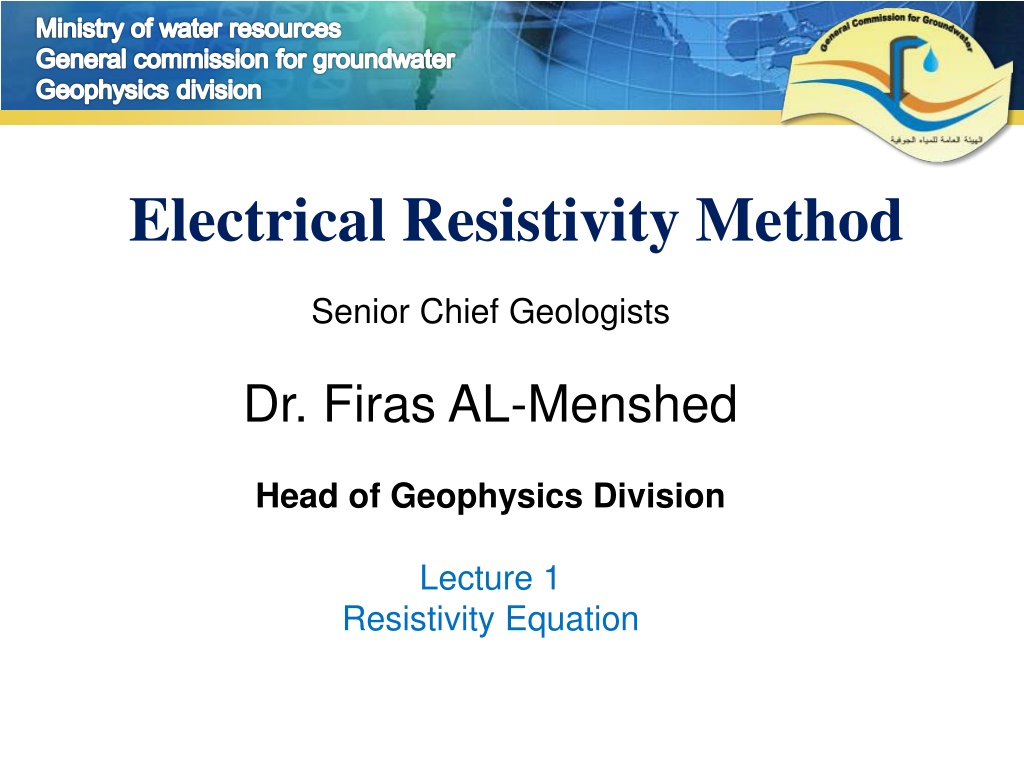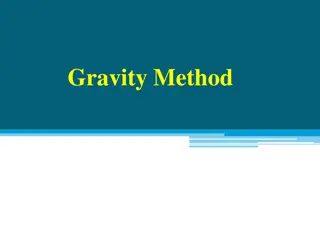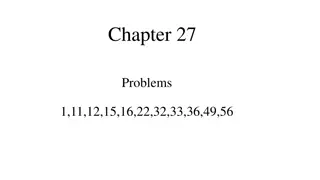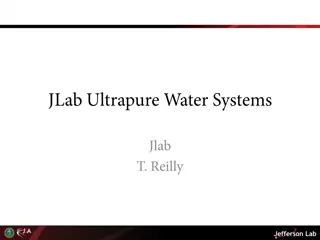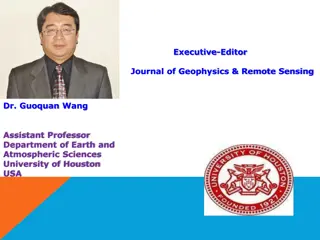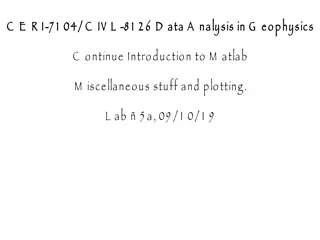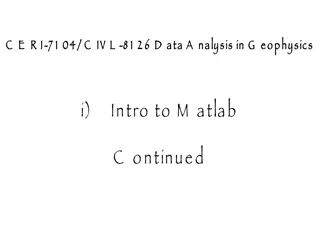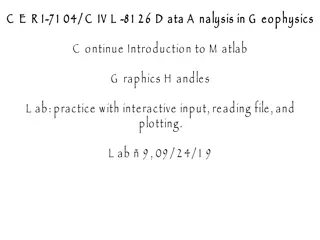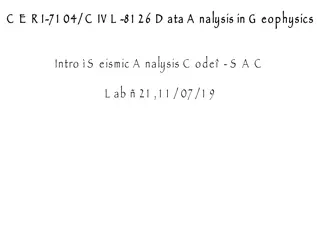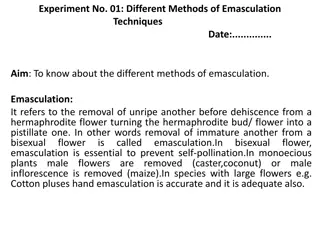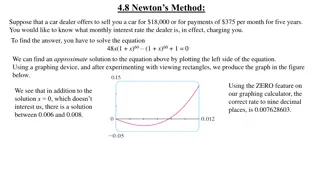Understanding DC Resistivity Method in Geophysics
The DC resistivity method is widely used in geophysics for measuring earth resistivity, especially in groundwater exploration and various other studies. This method involves passing an electric current through the ground and measuring the resulting potential difference to determine the earth's resistivity. Various concepts such as current density, electric field, and resistance play crucial roles in understanding and interpreting resistivity measurements.
Download Presentation

Please find below an Image/Link to download the presentation.
The content on the website is provided AS IS for your information and personal use only. It may not be sold, licensed, or shared on other websites without obtaining consent from the author. Download presentation by click this link. If you encounter any issues during the download, it is possible that the publisher has removed the file from their server.
E N D
Presentation Transcript
Ministry of water resources General commission for groundwater Geophysics division Electrical Resistivity Method Senior Chief Geologists Dr. Firas AL-Menshed Head of Geophysics Division Lecture 1 Resistivity Equation
Introduction The DC resistivity method is one of the simplest geophysical techniques used to measure earth resistivity, but it is still employed extensively because of its easy using and relatively easy interpretation. The most common application is groundwater exploration, but it is also used in geothermal, environmental, and engineering studies. The measurement of the earth s resistivity is very similar in concept to the laboratory resistivity measurement of rock samples. A DC electric current is passed through the ground via a pair of current electrodes and a resulting potential difference is measured between a second pair of potential electrodes.
Current Density current density (J) is current per area or, equivalently, charge per area and time unit of J: A/m2 I J = + + + A + I: Current (Amperes) A: Area (m2) directions are important
Electric Field V = E L V: Potential difference(volts) L: Length (m) unit of (E): V/m
electric field creates force acting on charge carriers. in many materials: current density (approximately) proportional to electric field 1 = = J E E is electrical conductivity is electrical resistivity and are material properties
1 I V = = I J = J E E = E L A V = = VA IL A L VA = IL where ( V volts) is the potential difference, (I amperes) is the current flow between two points in a conductor its length (L) and its cross-sectional area (A).
VA = IL V = R R: resistance in (Ohm) Ohm law I 2 ( )( ) v m .)( unit of = m . ohm ( ) amp m
The resistivity () depends on the property of the material and is a geometrically - independent quantity that describes a material s ability to transmit electrical current. For a half space solution we consider a single current electrode, a point source of current, on the surface of a homogeneous-isotropic half space, injecting a current (I) into the Earth. The flow of electric current will be radially symmetric in the half space. We balance the current flowing into the earth at the electrode with the total current flow out of a hemispherical surface.
A B Current flow lines Equipotential hemispherical surfaces Because of the radial symmetry of current flow, the current will be constant at a distance (r) from the current electrode, so the total current flow across the hemispherical surface with cross sectional area of ( ), therefore: 2 r 2
= 2 r 2 Ir V where (r) is the outward normal to the hemisphere. From this equation we obtain the potential ( ) from point current source at distance ( r ) as: I Vr 2 Now for the general four electrodes array, the potential at electrode (M) is simply the sum of the effects of the two current electrodes (A) and (B): V = r
Now for the general four electrodes array, the potential at electrode (M) is simply the sum of the effects of the two current electrodes (A) and (B):
The potential at M is: 1 I 2 I 2 = VA M 1 1 I 2 AM 1 = VAB M AM BM = VB M BM And similarly the potential at N is: 1 I 2 = VA N AN 1 1 I 2 = VAB N AN BN 1 I = VB N 2 BN
1 1 I 2 = VAB M AM BM 1 1 I 2 = VAB N AN BN 1 1 1 1 I 2 = = + AB MN AB M AB N V V V AM BM AN BN 2 V = 1 1 1 1 I + AM BM AN BN
Apparent resistivity If the Earth is not a homogeneous-isotropic halfspace the above expression would not yield the true resistivity of the Earth. In a heterogeneous medium, the measured resistivity is an apparent resistivity, which is a function of : The form of the inhomogeneity; The electrode spacing Surface location Direction
Apparent resistivity means that the resistivity will change if we changing the electrodes arrangement or changing the measurement positions or direction. So that will be directly proportional to the geometry of electrodes. a 2 where (K) the geometric factor = K 1 1 1 1 + AM BM AN BN 2 V = a 1 1 1 1 I + AM BM AN BN V = K a I
